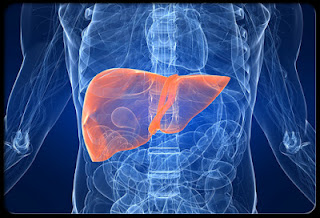
TORONTO, May 29, 2013 /Canada NewsWire/ - Liver cancer is one of the fastest rising of all cancers in Canada, yet most Canadians do not know enough about risk factors and prevention, according to Canadian Cancer Statistics 2013, released today by the Canadian Cancer Society in collaboration with the Public Health Agency of Canada and Statistics Canada.
Since 1970, the incidence rate of liver cancer has tripled in Canadian men and doubled in Canadian women, rising every year by 3.6% in men and 1.7% in women.
Liver cancer has a very poor prognosis, with a 5-year relative survival rate of only 20%. While it is still a relatively rare cause of death in Canada (1,000 deaths expected this year), the death rate in Canadian men has doubled since 1970. And worldwide it is the 3rd leading cause of cancer death after lung and stomach cancer, accounting for about 700,000 deaths per year.
The main risk factors for liver cancer are chronic hepatitis B and C infections. However, hepatitis is not well recognized as a serious health threat. In addition, many people don't know that they have hepatitis. Approximately 600,000 Canadians are infected with hepatitis B or C, according to the Public Health Agency of Canada.
Heavy alcohol use, obesity, diabetes, smoking and several other factors are also associated with a higher risk of liver cancer.
If more isn't done to address the risk factors for liver cancer, incidence and death rates are expected to continue to rise in Canada.
Recommendations from the report
To lower the rising rates of liver cancer cases and deaths, it will be important to:
...Find and treat people who have hepatitis B or C. This can reduce progression to chronic infection, which can lead to cancer.
...Encourage primary healthcare providers to offer the hepatitis B vaccination or appropriate testing and treatment for hepatitis B or C to at-risk people, including newcomers to Canada if they come from parts of the world where hepatitis B, hepatitis C or liver cancer are common .
...Raise awareness among Canadians about the risk factors for liver cancer, especially its links with hepatitis B and C, how to reduce the risk of liver cancer and how to get tested and treated for hepatitis infection if they belong to an at-risk group.
...Encourage primary healthcare providers to counsel patients about alcohol use, maintaining a healthy weight and not smoking, which can reduce the risk of liver cancer, in addition to having other health benefits.
...Conduct more research in Canada about the most effective ways to educate the public about the disease and to better understand the needs of liver cancer patients and survivors.
...Have more Canadian data to understand the best strategies for hepatitis B and C screening, and how best to engage communities in promoting screening for hard-to-reach populations.
"It's important to draw attention to the rising incidence and death rates for liver cancer so that we can tackle this important public health problem," says Dr Prithwish De, epidemiologist with the Canadian Cancer Society and the lead author of the special topic on liver cancer. "The good news is that liver cancer is largely preventable by modifying risk factors."
More about liver cancer in Canada
...In 2013, it is estimated that there will be over 2,000 new cases of liver cancer and about 1,000 deaths from the disease.
...The incidence rate is higher in Canadian men at 6.9 cases per 100,000 than in Canadian women at 1.9 cases per 100,000.
...Liver cancer is challenging to identify and treat because there are usually no symptoms until its later stages when the prognosis is poor. As a result, the death rate is high and the 5-year relative survival rate is low.
...Treatment can involve surgery, radiofrequency ablation, chemotherapy and/or radiation.
About the Canadian Cancer Society
For 75 years, the Canadian Cancer Society has been with Canadians in the fight for life. We have been relentless in our commitment to prevent cancer, fund research and support Canadians touched by cancer. From this foundation, we will work with Canadians to change cancer forever so fewer Canadians are diagnosed with the disease and more survive. Visit cancer.ca or call us at 1-888-939-3333 (TTY 1-866-786-3934).



